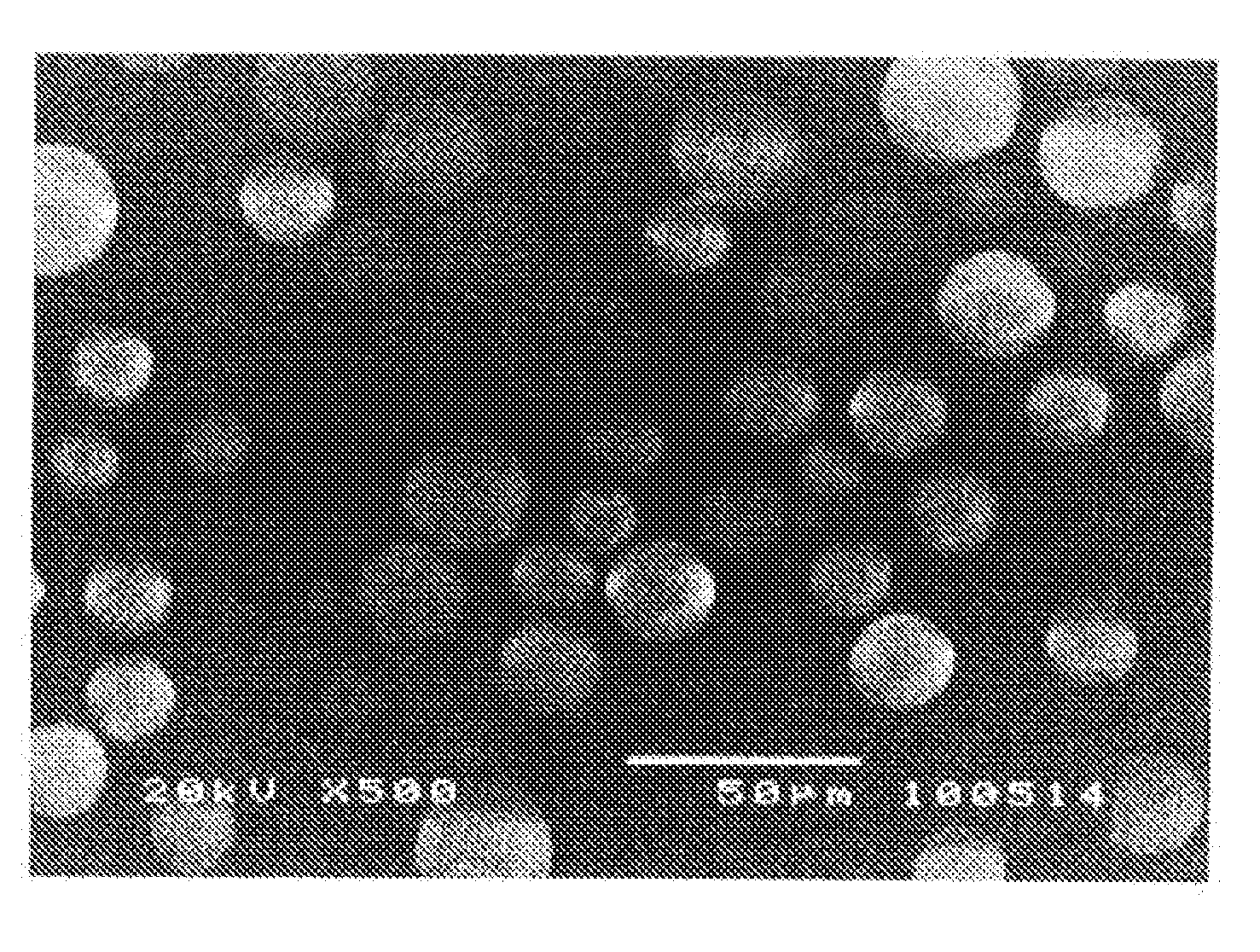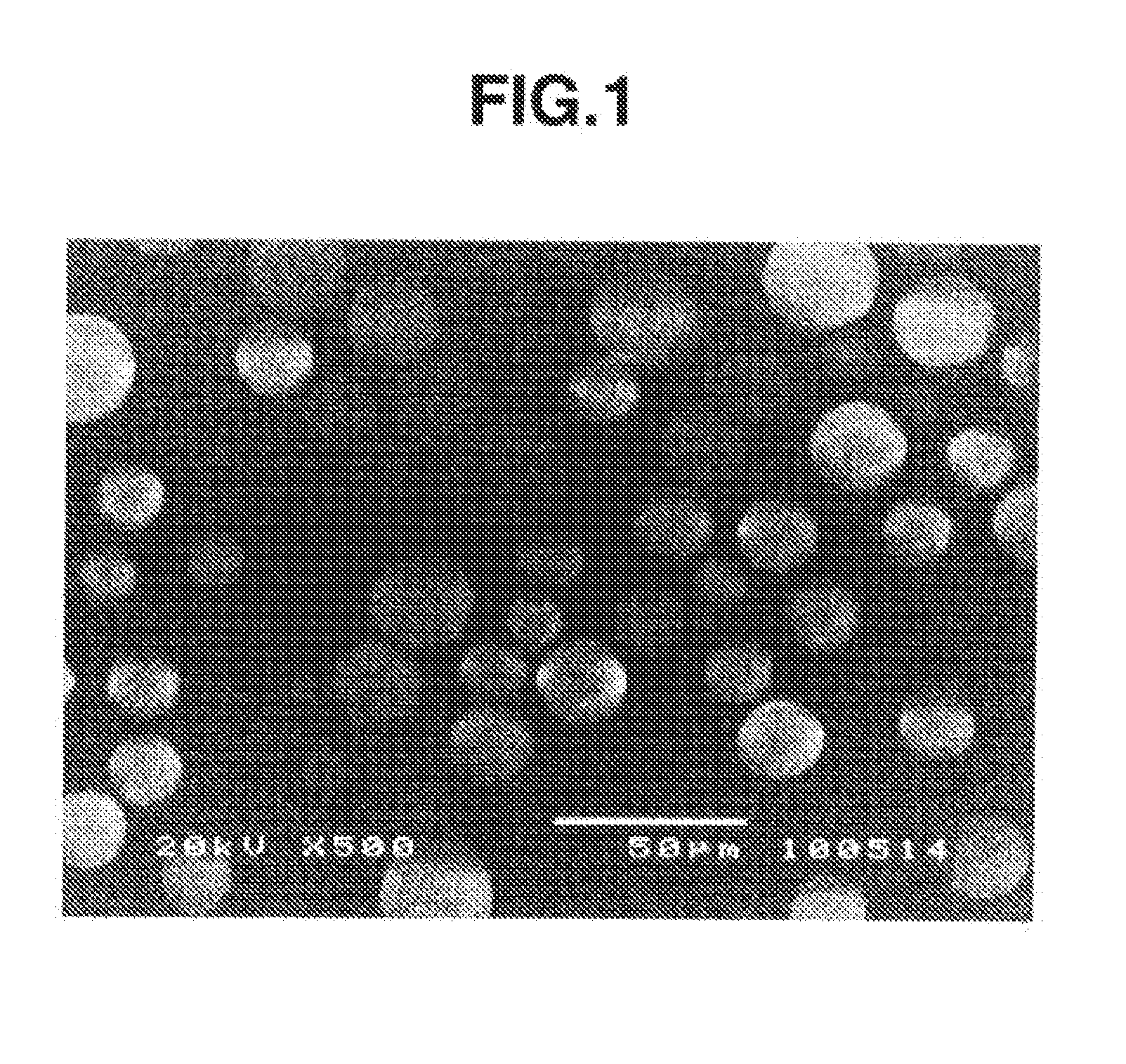Phosphor particles, light-emitting diode, and illuminating device and liquid crystal panel backlight device using them
a technology of light-emitting diodes and phosphor particles, which is applied in the direction of discharge tube luminescnet screens, lighting and heating apparatus, instruments, etc., can solve the problems of reducing production yield and degrading of phosphor properties, and achieve the effect of minimising variation and minimising variation of chromaticity
- Summary
- Abstract
- Description
- Claims
- Application Information
AI Technical Summary
Benefits of technology
Problems solved by technology
Method used
Image
Examples
example 1
[0034]A 99.9% purity yttrium oxide (Y2O3) powder having an average particle size of 1.0 μm, a 99.0% purity aluminum oxide (Al2O3) powder having an average particle size of 0.5 μm and a 99.9% purity cerium oxide (CeO2) powder having an average particle size of 0.2 μm were combined in a molar ratio of Y:Al:Ce=2.94:5:0.06 to form a powder mixture. The powder mixture, 1,000 g, was combined with 1,500 g of deionized water, 10 g of poly(ammonium acrylate), and 2 g of carboxymethyl cellulose and milled in a ball mill for 6 hours. The resulting slurry was granulated through a two-fluid nozzle, obtaining granules having an average particle size of 15 μm. The granules were heat treated in air at 1,000° C. for 2 hours to burn off the organic matter. Subsequent heat treatment in vacuum at 1,600° C. for 5 hours yielded phosphor particles. The phosphor particles were qualitatively analyzed by XRD, finding a YAG phase as the main phase.
[0035]The phosphor particles were observed under an electron m...
example 2
[0037]In a ball mill, 1,000 g of 99.9% purity Y2.94Ce0.06Al5O12 garnet powder having an average particle size of 1.0 μm was milled with 1,500 g of deionized water, 10 g of poly(ammonium acrylate) and 2 g of carboxymethyl cellulose for 6 hours. The resulting slurry was granulated through a centrifugal atomizer, obtaining granules having an average particle size of 24 μm. The granules were heat treated in air at 1,600° C. for 2 hours to burn off the organic matter. The granules were fed into a DC arc plasma, melted therein, and solidified again. The solidified particles were collected as phosphor particles. The phosphor particles were qualitatively analyzed by XRD, finding YAG phase (garnet phase) as the main phase. The particles were annealed at 1,400° C. for 4 hours in a reducing atmosphere of 98% by volume argon and 2% by volume hydrogen, resulting in a phosphor capable of emitting yellow light when excited with blue light.
[0038]The phosphor particles were observed under an electro...
example 3
[0039]A tantalum crucible was charged with 7,840 g of 99.9% purity yttrium, 4,044 g of 99.9% purity aluminum, and 252 g of 99.9% purity cerium, which were melted in vacuum for alloying. The alloy melt was cast in a mold of 20 mm diameter to form an alloy bar. Using a rotary disc atomizer, the alloy bar was processed into spherical or substantially spherical fine particles. There were contained particles of irregular shape. Using an inclined plate, irregular shape particles were separated from spherical or substantially spherical particles. The alloy particles thus obtained had an average particle size of about 35 μm. The alloy particles were slowly heated to 1,500° C. in an air furnace, and then cooled.
[0040]The phosphor particles were spherical or substantially spherical when observed under an electron microscope, and consisted of YAG phase on XRD qualitative analysis. The particles were annealed at 1,500° C. for 4 hours in a reducing atmosphere of 98% by volume argon and 2% by vol...
PUM
| Property | Measurement | Unit |
|---|---|---|
| particle size | aaaaa | aaaaa |
| density | aaaaa | aaaaa |
| angle of repose | aaaaa | aaaaa |
Abstract
Description
Claims
Application Information
 Login to View More
Login to View More - R&D
- Intellectual Property
- Life Sciences
- Materials
- Tech Scout
- Unparalleled Data Quality
- Higher Quality Content
- 60% Fewer Hallucinations
Browse by: Latest US Patents, China's latest patents, Technical Efficacy Thesaurus, Application Domain, Technology Topic, Popular Technical Reports.
© 2025 PatSnap. All rights reserved.Legal|Privacy policy|Modern Slavery Act Transparency Statement|Sitemap|About US| Contact US: help@patsnap.com



